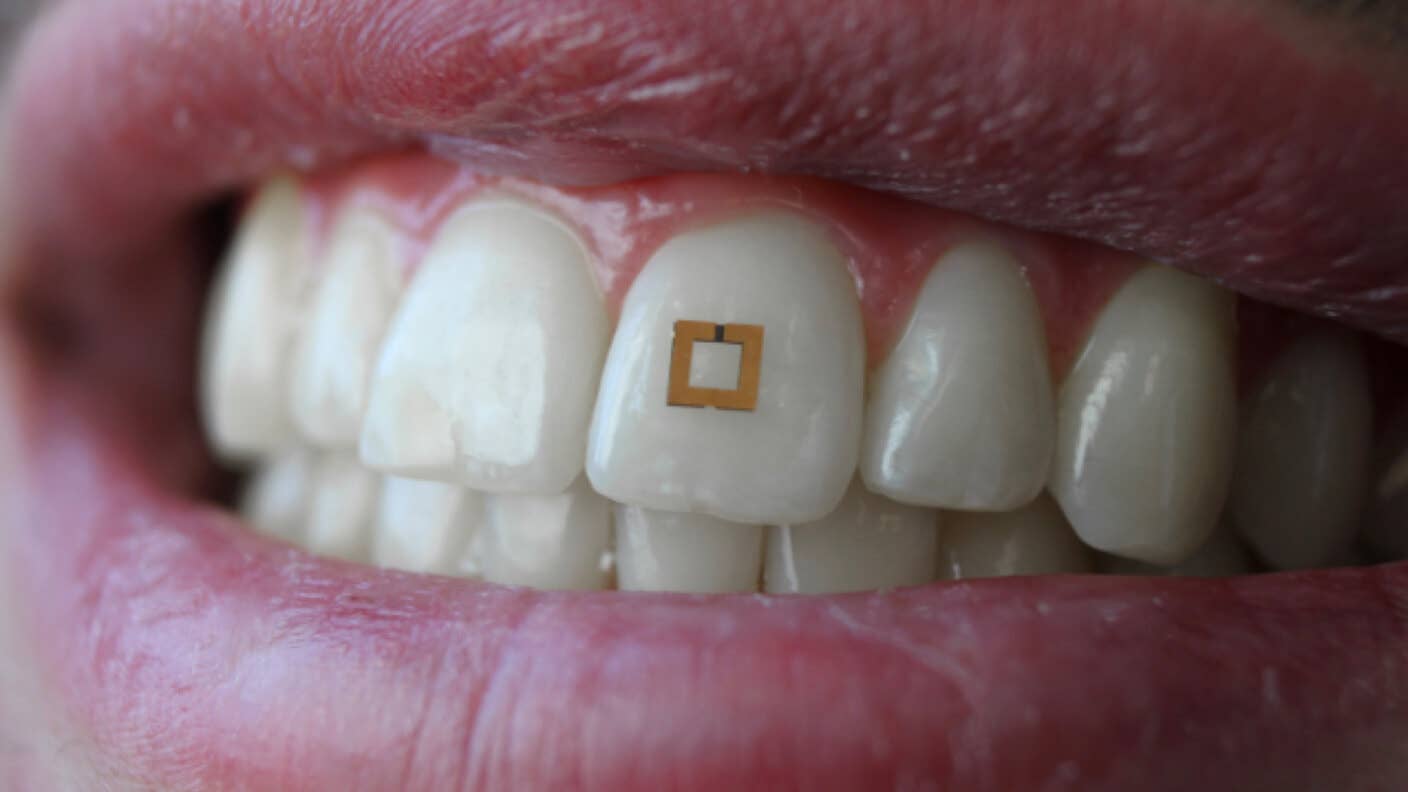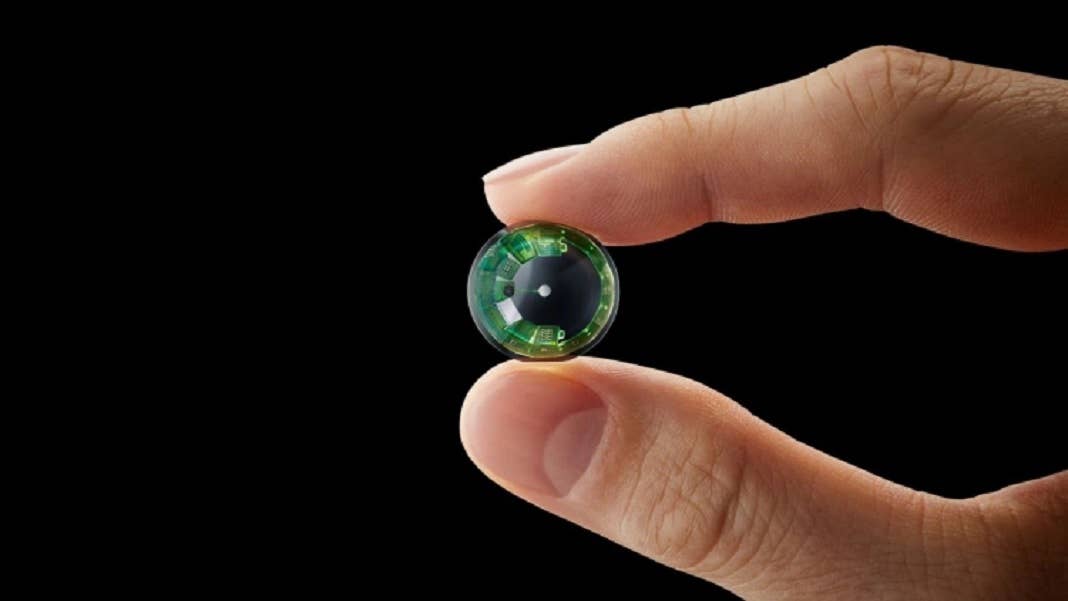Tiny Tooth Sensor Tracks What You Eat, and It Could Help You Be Healthier

Share
The South Beach diet. The Atkins diet. Eating paleo. Cutting out gluten. Going vegan. The list of fad diets and health crazes goes on, yet health statistics in the US and around the world show that most people still don’t know what to eat, or when, or how much.
New research from Tufts University’s engineering school has created a product that may be able to help: a sensor worn on users’ teeth that wirelessly transmits data about food intake to a smartphone app.
In a paper published in March in the journal Advanced Materials, the Tufts team deconstructed the sensor. It’s made of a porous silk film or a hydrogel that responds to changes in pH or temperature—the active layer—sandwiched between two square-shaped gold outer panels. The sensor’s middle layer detects chemicals and nutrients, reacting to different inputs with a shift in its electrical properties. That shift causes the sensor to transmit a different spectrum and intensity of radio frequency waves back to the app.
Fiorenzo Omenetto, a biomedical engineering professor at Tufts and co-author of the study, said, “We have extended common RFID [radio frequency ID] technology to a sensor package that can dynamically read and transmit information on its environment, whether it is affixed to a tooth, to skin, or any other surface.”
Measuring just two millimeters on each side, the sensor is impressively tiny, and it’s succeeded in detecting sugar, salt, and alcohol. The team plans to refine the sensor to the point where it will be able to detect and measure all kinds of nutrients, and maybe even biochemicals too. “In theory we can modify the bioresponsive layer in these sensors to target other chemicals. We are really limited only by our creativity,” Omenetto said.
Once you’ve chosen the right diet for you, then, wearing a sensor like this could help you get your quantities spot-on, ideally helping you improve your diet and thus your overall health. The sensor is just the latest in a series of wearable devices springing from the quantified self movement—from Fitbits to smart watches, these data-harvesting gadgets all aim to give users increased awareness and thus increased control over their own health, ideally shifting healthcare norms from reactive to proactive, curative to preventative.
Be Part of the Future
Sign up to receive top stories about groundbreaking technologies and visionary thinkers from SingularityHub.


It’s important to note, though, that while sensors and similar tools could certainly prove useful, they’re just one small component on the vast landscape of improving our diet and our health.
A disproportionate amount of the food we eat, particularly in the US, is heavily processed; we’re eating more chemicals than we are nutrients. In addition, many low-income areas are classified as food deserts, not a head of broccoli or a bunch of bananas in sight. Before monitoring the contents of each bite of food you eat, you must have access to healthy foods in the first place, not to mention know what’s healthy and what isn’t.
Ideally, then, the tooth sensor and other health tech like it will be geared towards a wide range of users, not just those who’ve already tried going paleo. Or pescatarian. Or dairy-free. You get the idea.
Image Credit: SilkLab, Tufts University
Vanessa has been writing about science and technology for eight years and was senior editor at SingularityHub. She's interested in biotechnology and genetic engineering, the nitty-gritty of the renewable energy transition, the roles technology and science play in geopolitics and international development, and countless other topics.
Related Articles

This Portable Wind Turbine Is the Size of a Water Bottle and Charges Devices in Under an Hour

Mojo Vision’s New Contact Lens Brings Seamless Augmented Reality a Step Closer
The Weird, the Wacky, the Just Plain Cool: Best of CES 2020
What we’re reading